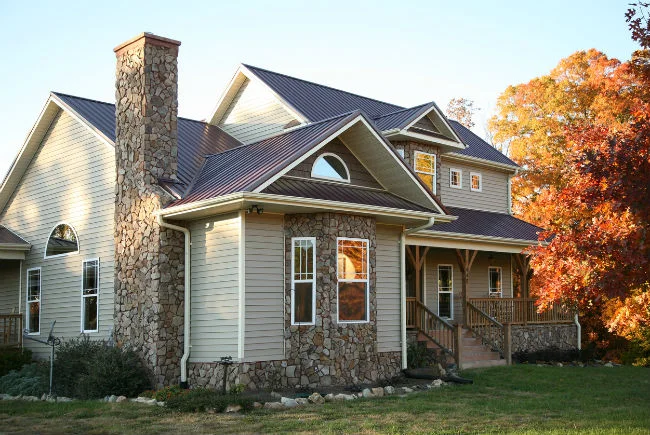Metal roofs are an excellent investment that add both style and functionality to your home, as their durability makes them low maintenance options. A metal roof may even extend its life through proper care!
Metal roofs provide the ultimate in protection from high winds and hurricanes, and may also increase your property value.
Many manufacturers provide photo galleries and roof visualizers on their websites that allow customers to visualize what various styles of roofing would look like on homes of varying styles.
1. Durability
Metal roofs offer superior durability over traditional shingle roofing, being more resilient against high winds and extreme weather conditions while being fire-resistant; homeowners can therefore save on insurance premiums and energy costs with metal roofing.
Metal roofs offer durability as well as style variety to fit into any architectural style, from traditional homes with tiles and shingle designs to sleek standing seam panels used on modern cabins.
For maximum durability and reliability, the highest-grade metal roofs can be constructed using galvalume, aluminum, zinc or stainless steel materials. Each option has their own set of benefits; however, choosing a reputable manufacturer is crucial to producing durable products that stand the test of time.
2. Energy Efficiency
Metal roof rain sounds are popularly featured in white noise machines and meditation apps, but that isn’t the only reason metal roofing has gained in popularity with homeowners; energy efficiency may save money over time too!
Metal roofs reflect sunlight, helping maintain an ideal interior temperature and reducing your need for air-conditioning. On an average winter day, temperatures inside your home remain 20 degrees warmer when protected by metal instead of asphalt shingle roofs.
Choose a light or cool hue for your roof to maximize sunlight and energy reflection, and if opting for dark hues consider choosing Sherwin Williams WeatherXL Crinkle Finish in order to prevent it from looking shiny and stark.
3. Aesthetics
Homeowners shopping for new roofing are typically seeking something that marries practicality with aesthetic appeal – metal roofs offer both.
Metal roofing styles span from classic standing seam to more contemporary shingle and tile roof designs, with various color choices available depending on manufacturer preferences. Kynar 500 coating can keep paint vibrant while remaining resilient against extreme weather elements.
Other types of roof finishes available to homeowners include copper and galvalume (galvanized aluminum with zinc). Some of these roofs feature natural patina that makes older homes even more charming; there are even metal shake roofs which resemble hand-split cedar for an authentic rustic aesthetic.
4. Low Maintenance
Contrary to their asphalt counterparts, metal roofs require much less frequent replacement and maintenance compared to their asphalt counterparts; only occasional cleanings may be needed to keep them looking their best.
Metal roofing reflects sunlight to keep your house cooler on hot days while also lowering energy costs. Plus, metal is an insulator which helps your home remain warm during colder weather while saving on heating costs!
Homeowners have many metal roofing styles and colors available to them when selecting metal roof solutions that complement their home’s architecture and personal taste. Their options include steel (galvanized, galvalume or aluminum), copper and zinc options backed by workmanship warranties for maximum convenience.
5. Cost
Metal roofs tend to cost more than other options initially, but their longevity will save money on repair expenses over time and increase your home’s resale value.
Metal roofs offer significant maintenance savings compared to asphalt shingle and tile roofs, are fireproof, and can withstand extreme weather conditions that would damage other materials.
There are various kinds of metal roofs with different price points available today, from luxurious copper roofs to budget-conscious galvanized steel or even stainless steel roofing systems. There are also varying options available when it comes to underlayments; felt or synthetic can add additional costs but may provide insulation against leaks as well as leak protection.


